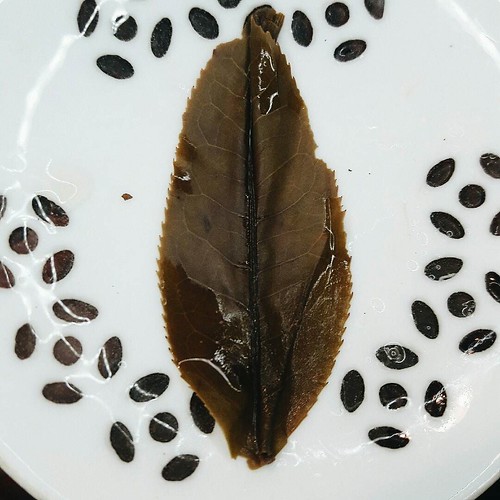S accelerate tumor expansion by way of angiogenesis. The immunohistochemical staining from the identical specimens as these made use of in the present study revealed that the number of CD34-positive endothelial cells within the tumor tissues was substantially correlated with poor clinical outcomes on the OSCC patients; nonetheless, there was no important correlation in between the CD34positive cell quantity and IL-8 expression or CD163-positive M2 macrophageinfiltration within the tumor tissues. Therefore, IL-8 and CD163-positive macrophages could possibly elicit tumor relapse and/or postoperative cervical LN metastasis via any other mechanisms besides tumor angiogenesis in the tumor microenvironment. In the present study, Foxp3-positive cell infiltration inside the tumor tissue didn’t correlate together with the patients’ survival or with other immunological parameters including serum IL-8, IL-8 and CD163. Foxp3-positive T cells are conventionally believed to suppress antitumor immunity, resulting in poor clinical outcomes in Relebactam site cancer sufferers. Having said that, several recent reports demonstrated that cancer sufferers with high levels of tumor-infiltrating Foxp3-positive cells showed favorable clinical outcomes, and that anti-inflammatory cytokines made by Foxp3+ Tregs suppress IL-6, IL-8 and TNF-a which may possibly  accelerate tumor progression. The role of Foxp3-positive cells inside the clinical outcome of cancer sufferers is remains controversial. Since the present findings also strongly recommend that IL-8 will not be only a prognostic marker but also a aspect that may perhaps contribute to a poor prognosis, the agents that can block the activity of IL-8 may very well be beneficial for improving the clinical outcome of individuals with higher IL-8 levels. We are now preparing a clinical trial for OSCC sufferers using IL-8 inhibitors like a humanized anti-human IL-8 monoclonal antibody and a few nutritional supplements that will suppress the upstream signals of IL-8 production, e.g. NF-kB and STAT3. We count on that the ongoing prospective study will elucidate the prognostic and predictive significance of IL-8 reflecting the tumor microenvironment together with the infiltration of CD163-positive M2 macrophages, and that it will be feasible to conduct a clinical trial of an IL-8 inhibitor for high-risk OSCC sufferers. Heat shock proteins are one of the most ancient molecular defense systems. In non-stressed and non-transformed cells, HSPs are ubiquitously expressed in PubMed ID:http://jpet.aspetjournals.org/content/124/1/16 low amounts as intracellular proteins that exhibit a
accelerate tumor progression. The role of Foxp3-positive cells inside the clinical outcome of cancer sufferers is remains controversial. Since the present findings also strongly recommend that IL-8 will not be only a prognostic marker but also a aspect that may perhaps contribute to a poor prognosis, the agents that can block the activity of IL-8 may very well be beneficial for improving the clinical outcome of individuals with higher IL-8 levels. We are now preparing a clinical trial for OSCC sufferers using IL-8 inhibitors like a humanized anti-human IL-8 monoclonal antibody and a few nutritional supplements that will suppress the upstream signals of IL-8 production, e.g. NF-kB and STAT3. We count on that the ongoing prospective study will elucidate the prognostic and predictive significance of IL-8 reflecting the tumor microenvironment together with the infiltration of CD163-positive M2 macrophages, and that it will be feasible to conduct a clinical trial of an IL-8 inhibitor for high-risk OSCC sufferers. Heat shock proteins are one of the most ancient molecular defense systems. In non-stressed and non-transformed cells, HSPs are ubiquitously expressed in PubMed ID:http://jpet.aspetjournals.org/content/124/1/16 low amounts as intracellular proteins that exhibit a  variety of cytoprotective functions, such as MedChemExpress TCS-OX2-29 buffering the cell from stressful circumstances, monitoring suitable protein folding, cellular housekeeping, and presenting antigens to immune cells. Having said that, the cytoprotective effects of HSPs are also exploited by transformed cells to promote their very own survival. In stressed and cancer cells, intracellular HSP-peptide complexes induce antiapoptotic effects and act as cytoprotectants by directing damaged proteins for degradation, whereas extracellular HSPs elicit immune responses by carrying various immunogenic peptides. Although intracellular chaperones/HSPs have already been studied for the last 5 decades, studies of extracellular HSPs have only begun in current years. The release of HSPs in to the extracellular milieu is emerging as a characteristic of quite a few pathological circumstances, including infection and cancer. Recent studies have shown that a broad range of HSP paralogues which can be ordinarily restricted to discrete intracellular compartments are relocated to the surface of cancer and infected cells. Import.S accelerate tumor expansion by way of angiogenesis. The immunohistochemical staining from the very same specimens as those applied within the present study revealed that the amount of CD34-positive endothelial cells inside the tumor tissues was substantially correlated with poor clinical outcomes of your OSCC patients; even so, there was no considerable correlation amongst the CD34positive cell quantity and IL-8 expression or CD163-positive M2 macrophageinfiltration within the tumor tissues. Thus, IL-8 and CD163-positive macrophages could elicit tumor relapse and/or postoperative cervical LN metastasis by means of any other mechanisms in addition to tumor angiogenesis within the tumor microenvironment. Inside the present study, Foxp3-positive cell infiltration in the tumor tissue didn’t correlate with all the patients’ survival or with other immunological parameters including serum IL-8, IL-8 and CD163. Foxp3-positive T cells are conventionally thought to suppress antitumor immunity, resulting in poor clinical outcomes in cancer individuals. Even so, a number of recent reports demonstrated that cancer individuals with higher levels of tumor-infiltrating Foxp3-positive cells showed favorable clinical outcomes, and that anti-inflammatory cytokines created by Foxp3+ Tregs suppress IL-6, IL-8 and TNF-a which might accelerate tumor progression. The function of Foxp3-positive cells within the clinical outcome of cancer individuals is remains controversial. Since the present findings also strongly recommend that IL-8 isn’t only a prognostic marker but in addition a issue that may possibly contribute to a poor prognosis, the agents that may block the activity of IL-8 can be beneficial for improving the clinical outcome of individuals with higher IL-8 levels. We’re now preparing a clinical trial for OSCC individuals utilizing IL-8 inhibitors such as a humanized anti-human IL-8 monoclonal antibody and a few nutritional supplements which can suppress the upstream signals of IL-8 production, e.g. NF-kB and STAT3. We expect that the ongoing potential study will elucidate the prognostic and predictive significance of IL-8 reflecting the tumor microenvironment with the infiltration of CD163-positive M2 macrophages, and that it will likely be possible to conduct a clinical trial of an IL-8 inhibitor for high-risk OSCC individuals. Heat shock proteins are among the list of most ancient molecular defense systems. In non-stressed and non-transformed cells, HSPs are ubiquitously expressed in PubMed ID:http://jpet.aspetjournals.org/content/124/1/16 low amounts as intracellular proteins that exhibit a variety of cytoprotective functions, such as buffering the cell from stressful circumstances, monitoring suitable protein folding, cellular housekeeping, and presenting antigens to immune cells. Even so, the cytoprotective effects of HSPs are also exploited by transformed cells to promote their very own survival. In stressed and cancer cells, intracellular HSP-peptide complexes induce antiapoptotic effects and act as cytoprotectants by directing broken proteins for degradation, whereas extracellular HSPs elicit immune responses by carrying a variety of immunogenic peptides. Although intracellular chaperones/HSPs have been studied for the final 5 decades, research of extracellular HSPs have only begun in recent years. The release of HSPs into the extracellular milieu is emerging as a characteristic of a lot of pathological conditions, like infection and cancer. Recent research have shown that a broad variety of HSP paralogues which are typically restricted to discrete intracellular compartments are relocated to the surface of cancer and infected cells. Import.
variety of cytoprotective functions, such as MedChemExpress TCS-OX2-29 buffering the cell from stressful circumstances, monitoring suitable protein folding, cellular housekeeping, and presenting antigens to immune cells. Having said that, the cytoprotective effects of HSPs are also exploited by transformed cells to promote their very own survival. In stressed and cancer cells, intracellular HSP-peptide complexes induce antiapoptotic effects and act as cytoprotectants by directing damaged proteins for degradation, whereas extracellular HSPs elicit immune responses by carrying various immunogenic peptides. Although intracellular chaperones/HSPs have already been studied for the last 5 decades, studies of extracellular HSPs have only begun in current years. The release of HSPs in to the extracellular milieu is emerging as a characteristic of quite a few pathological circumstances, including infection and cancer. Recent studies have shown that a broad range of HSP paralogues which can be ordinarily restricted to discrete intracellular compartments are relocated to the surface of cancer and infected cells. Import.S accelerate tumor expansion by way of angiogenesis. The immunohistochemical staining from the very same specimens as those applied within the present study revealed that the amount of CD34-positive endothelial cells inside the tumor tissues was substantially correlated with poor clinical outcomes of your OSCC patients; even so, there was no considerable correlation amongst the CD34positive cell quantity and IL-8 expression or CD163-positive M2 macrophageinfiltration within the tumor tissues. Thus, IL-8 and CD163-positive macrophages could elicit tumor relapse and/or postoperative cervical LN metastasis by means of any other mechanisms in addition to tumor angiogenesis within the tumor microenvironment. Inside the present study, Foxp3-positive cell infiltration in the tumor tissue didn’t correlate with all the patients’ survival or with other immunological parameters including serum IL-8, IL-8 and CD163. Foxp3-positive T cells are conventionally thought to suppress antitumor immunity, resulting in poor clinical outcomes in cancer individuals. Even so, a number of recent reports demonstrated that cancer individuals with higher levels of tumor-infiltrating Foxp3-positive cells showed favorable clinical outcomes, and that anti-inflammatory cytokines created by Foxp3+ Tregs suppress IL-6, IL-8 and TNF-a which might accelerate tumor progression. The function of Foxp3-positive cells within the clinical outcome of cancer individuals is remains controversial. Since the present findings also strongly recommend that IL-8 isn’t only a prognostic marker but in addition a issue that may possibly contribute to a poor prognosis, the agents that may block the activity of IL-8 can be beneficial for improving the clinical outcome of individuals with higher IL-8 levels. We’re now preparing a clinical trial for OSCC individuals utilizing IL-8 inhibitors such as a humanized anti-human IL-8 monoclonal antibody and a few nutritional supplements which can suppress the upstream signals of IL-8 production, e.g. NF-kB and STAT3. We expect that the ongoing potential study will elucidate the prognostic and predictive significance of IL-8 reflecting the tumor microenvironment with the infiltration of CD163-positive M2 macrophages, and that it will likely be possible to conduct a clinical trial of an IL-8 inhibitor for high-risk OSCC individuals. Heat shock proteins are among the list of most ancient molecular defense systems. In non-stressed and non-transformed cells, HSPs are ubiquitously expressed in PubMed ID:http://jpet.aspetjournals.org/content/124/1/16 low amounts as intracellular proteins that exhibit a variety of cytoprotective functions, such as buffering the cell from stressful circumstances, monitoring suitable protein folding, cellular housekeeping, and presenting antigens to immune cells. Even so, the cytoprotective effects of HSPs are also exploited by transformed cells to promote their very own survival. In stressed and cancer cells, intracellular HSP-peptide complexes induce antiapoptotic effects and act as cytoprotectants by directing broken proteins for degradation, whereas extracellular HSPs elicit immune responses by carrying a variety of immunogenic peptides. Although intracellular chaperones/HSPs have been studied for the final 5 decades, research of extracellular HSPs have only begun in recent years. The release of HSPs into the extracellular milieu is emerging as a characteristic of a lot of pathological conditions, like infection and cancer. Recent research have shown that a broad variety of HSP paralogues which are typically restricted to discrete intracellular compartments are relocated to the surface of cancer and infected cells. Import.
